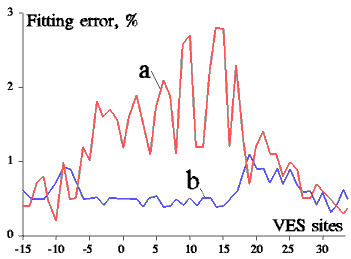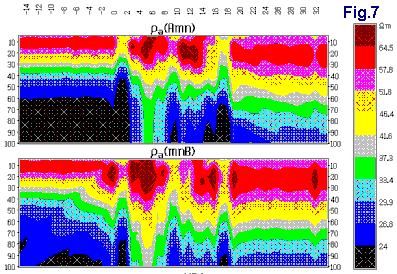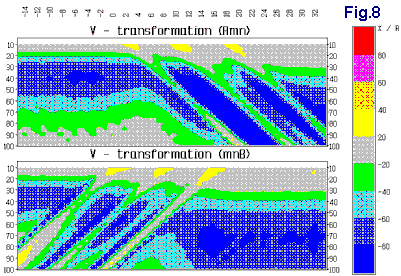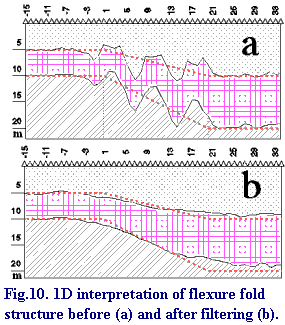| The deep boundaries look like being seen through "broken glass"
- NSI. After filtering with Median program
Rhoa field (fig.9, upper) looked like one, calculated for model
without NSI (fig.9, lower). All details connected with deep objects been
unchangeable. After filtering 1D interpretation gives the structure boundaries
much more correctly (fig.10b). Additional estimate of the filtering quality
may be fitting error between VES "field's" and theoretical curves
(fig.11). These errors are reduced noticeable after filtering, especially
in the part of the profile with NSI (VES 0-20). The smaller is fitting
error the more narrow are equivalence principle boundaries. |
 |
Fig.11. VES interpretation fitting errors before (a) and after (b) filtering
|


